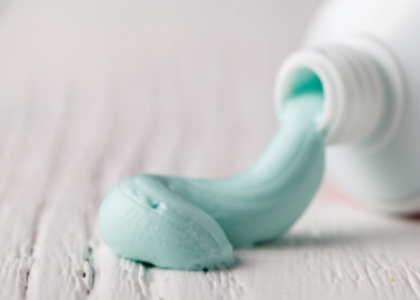If you’ve ever felt a sudden zing of pain while sipping hot coffee or enjoying a cold treat, you’re not alone. Tooth sensitivity is a common problem that affects millions of people worldwide. And while it can range from mildly annoying to seriously painful, the good news is that the right toothpaste can make a big difference.
But with so many options on store shelves, how do you know which toothpaste is best for sensitive teeth? Let’s explore what causes sensitivity and what ingredients and features to look for when choosing a toothpaste that can bring you lasting relief.
What Causes Tooth Sensitivity?
To understand how the right toothpaste can help, it’s important to first understand what causes sensitive teeth. Tooth sensitivity happens when the protective layer of enamel wears down or when gums recede, exposing the softer, inner part of the tooth called dentin. Dentin contains tiny channels, or tubules, that lead directly to the tooth’s nerve center.
When hot, cold, sweet, or acidic substances reach these exposed tubules, it triggers a sharp, sudden pain. Some common causes of sensitivity include:
- Brushing too hard or using a hard-bristled toothbrush
- Gum recession or gum disease
- Tooth decay or worn fillings
- Teeth grinding (bruxism)
- Acidic foods and drinks
- Whitening treatments or harsh toothpaste
How Toothpaste Helps with Sensitivity
Toothpaste for sensitive teeth is specially designed to reduce pain by protecting exposed dentin and calming the nerves inside your teeth. Most of these toothpastes work in two ways:
- Blocking the tubules that lead to the nerves, preventing external stimuli from causing pain
- Desensitizing the nerve endings, reducing their ability to respond to triggers
Regular use over time helps build up this protection, so the more consistent you are, the better the results.
Key Ingredients to Look For
When shopping for a toothpaste for sensitive teeth, check the label for the following ingredients. These are the most common and most effective for reducing sensitivity:
Potassium Nitrate
This is one of the most widely used active ingredients in sensitive toothpastes. Potassium nitrate works by calming the nerves inside your teeth, making them less likely to react to heat, cold, or sweetness. It’s gentle, safe for long-term use, and often recommended by dentists.
Stannous Fluoride
Unlike regular fluoride, stannous fluoride has the added benefit of forming a protective layer over exposed dentin. It not only strengthens enamel and helps prevent cavities but also seals the tubules that lead to the nerves, reducing sensitivity over time.
Strontium Chloride or Strontium Acetate
These compounds are sometimes used in European brands and work by blocking the dentin tubules. They’re effective but less common in the U.S. market.
Arginine and Calcium Carbonate
Found in some natural or newer toothpaste formulas, this combination mimics how your teeth naturally protect themselves. Arginine helps plug up dentin tubules while calcium carbonate acts as a mild abrasive to remove surface stains without damaging enamel.
Additional Features to Consider
In addition to active ingredients, here are a few other features to look for in a good sensitive toothpaste:
Low Abrasiveness
Avoid toothpastes with harsh whitening agents or overly gritty textures. These can wear down enamel even more, making sensitivity worse. Look for formulas that say “gentle” or “low abrasion.”
Fluoride Protection
Even if you’re focused on sensitivity, don’t forget about cavity protection. Choose a toothpaste that contains fluoride to help strengthen enamel and fight tooth decay.
No Harsh Additives
If your mouth is sensitive, you may also want to avoid artificial colors, strong flavorings, or alcohol-based ingredients. A mild mint or herbal flavor is often more soothing.
Whitening Options (If Needed)
Some people with sensitive teeth still want a whiter smile. Look for sensitive whitening toothpastes that use gentle polishing agents rather than peroxide, which can worsen sensitivity.
How Long Until You Feel Relief?
Toothpaste for sensitive teeth doesn’t work instantly—but it does work. Most people start to feel a noticeable difference within two weeks of consistent use, and full relief can take up to four weeks. Be patient and brush twice a day as directed for the best results.
Also, avoid switching back and forth between regular and sensitive toothpaste, as this can interrupt the protective effects.
When to See a Dentist
If you’ve been using sensitive toothpaste for a month and the pain still persists, it’s a good idea to check in with your dentist. Sensitivity can sometimes be a sign of a more serious issue like a cracked tooth, gum disease, or a deep cavity that needs professional treatment.



